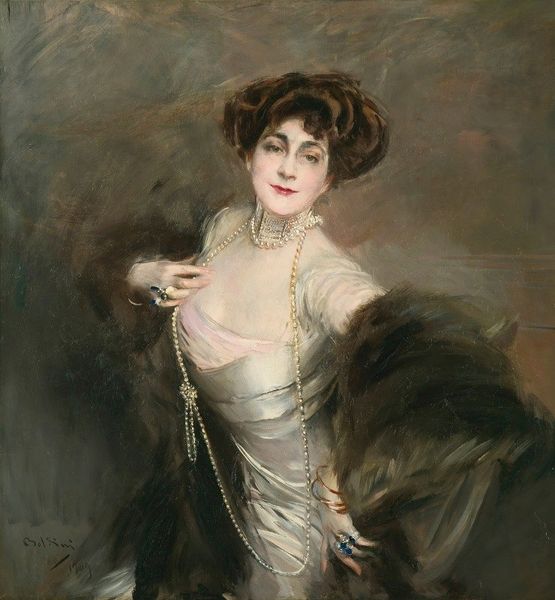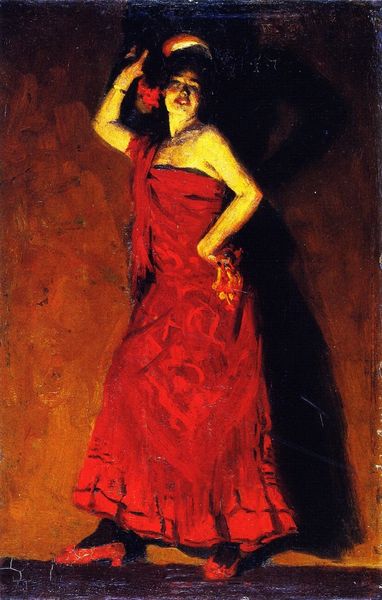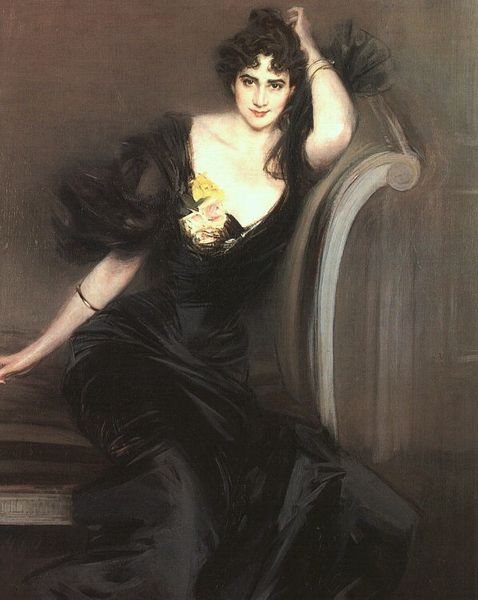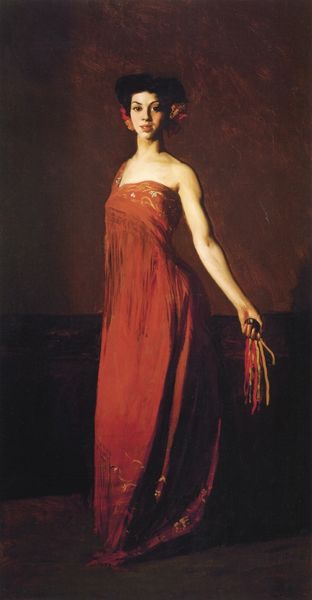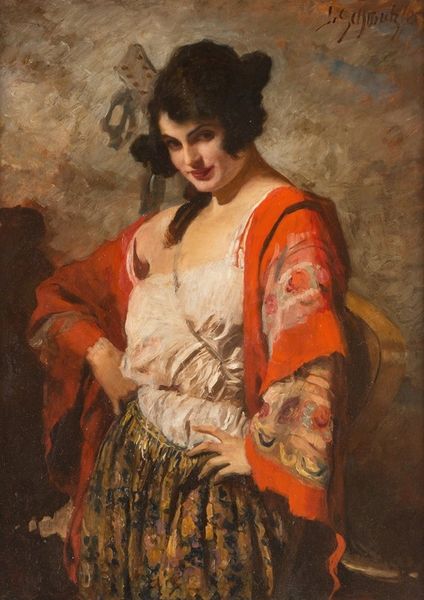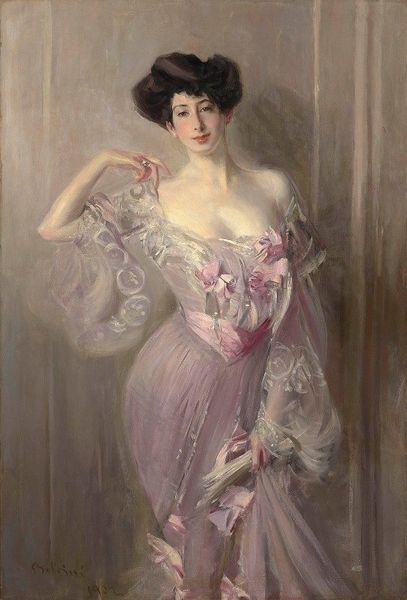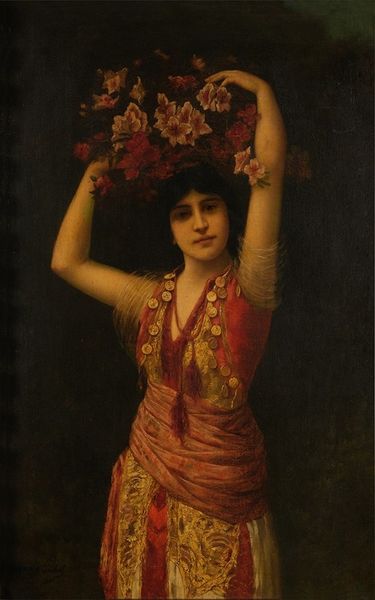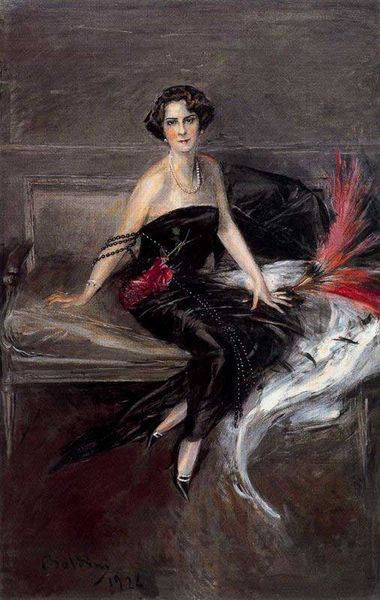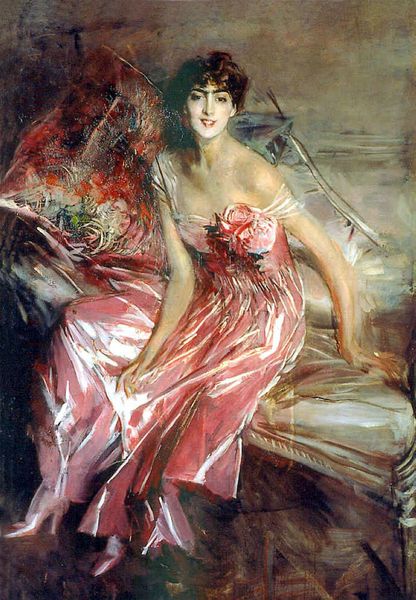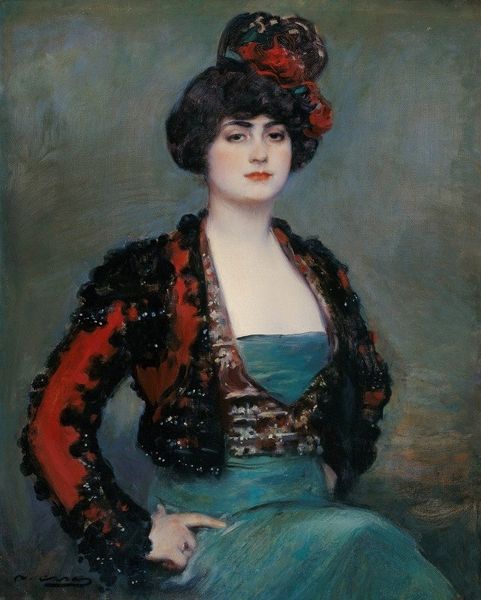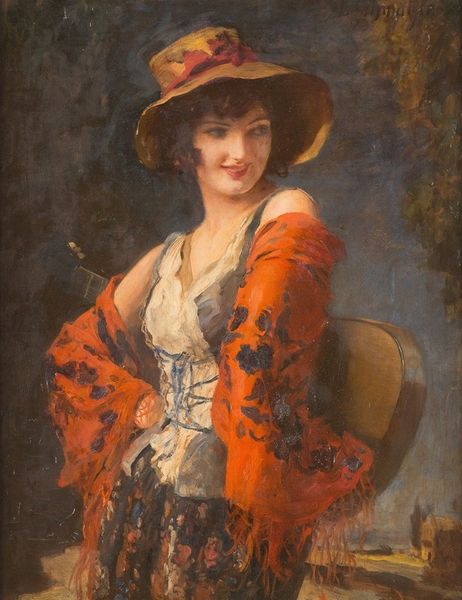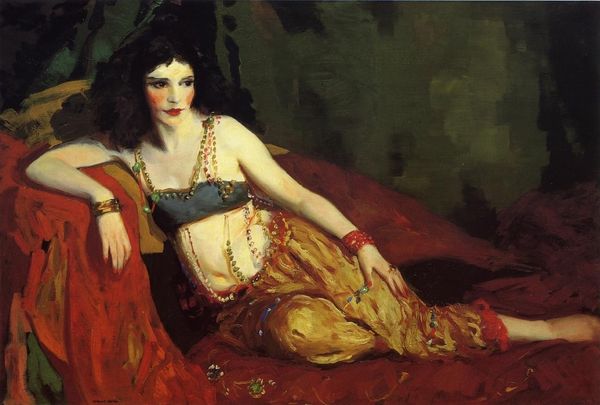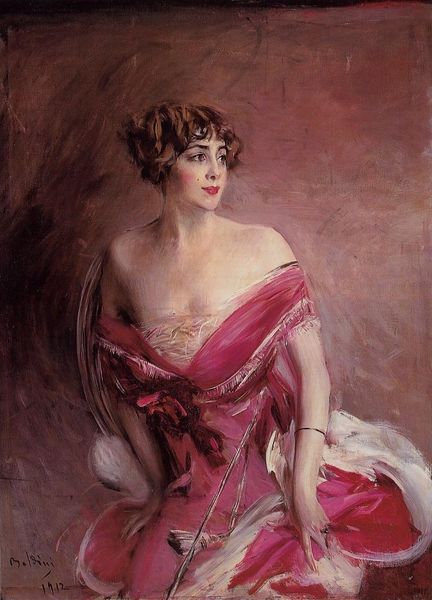
painting, oil-paint
#
portrait
#
figurative
#
fantasy art
#
painting
#
oil-paint
#
symbolism
#
nude
Copyright: Public Domain: Artvee
Editor: Here we have Franz von Stuck's "The Dancer Saharet," painted in 1906, using oil paints. The dancer's pose seems very performative, but there's also something subtly unsettling about it. What's your take? Curator: Looking at this through a materialist lens, I'm drawn to the construction of Saharet's image. The visible brushstrokes and the layered oil paint, it's all about the physical act of making, isn't it? And how does that physicality interact with the representation of a dancer, whose labor is often masked by glamour? Consider, too, the societal expectations placed upon female performers at the turn of the century. Editor: So you're saying the materiality reveals the labor, both the dancer’s and the artist's? Curator: Precisely. Stuck isn't just painting a portrait; he's engaging with the socio-economic reality of performance. Think about where Stuck’s wealth came from. Whose labor funded his paintings? Was it the burgeoning middle class eager to consume images of exoticism, facilitated through the availability of art supplies made by other unseen workers? How does that dynamic affect how we view Saharet’s image? Editor: That shifts the entire perspective! It's no longer just about aesthetic beauty but about the web of labor and consumption behind the image. I wouldn't have considered that on my own. Curator: Seeing art through the lens of material production exposes these hidden dynamics, forcing us to consider the often invisible hands that contribute to its creation and circulation. Editor: Definitely something to consider more often when I’m viewing art. Thanks. Curator: My pleasure. Always remember, the object holds more than meets the eye.
Comments
No comments
Be the first to comment and join the conversation on the ultimate creative platform.
